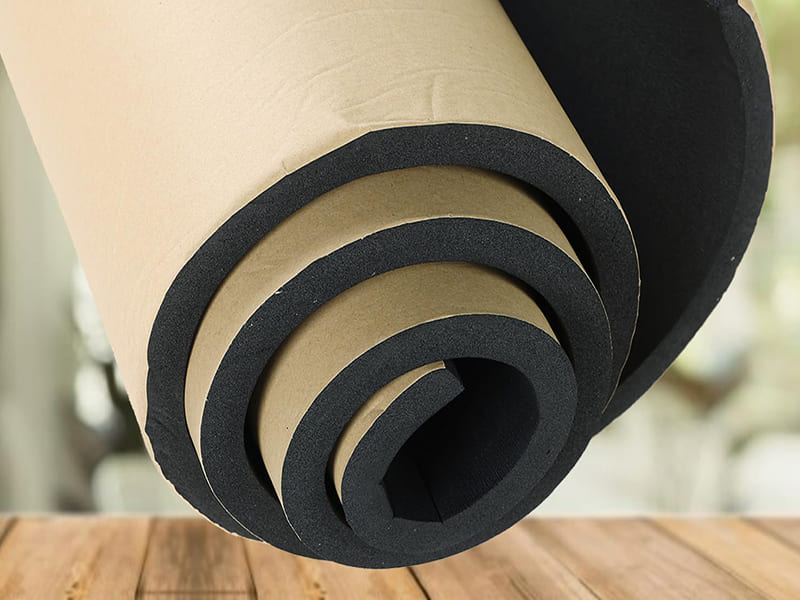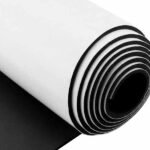Neoprene is a versatile material, widely used in products like wetsuits, koozies, and bags. Yet, one common issue people notice is its distinctive smell. For many, the odor raises concerns about safety and quality. But what exactly causes this smell, and should it be a reason for worry?
Neoprene smells because of the chemicals used in its manufacturing process. These compounds, such as chloroprene, release volatile organic compounds (VOCs) that produce a strong odor. While the smell can be off-putting, it usually fades over time.
Let’s explore what makes neoprene smell, how long the smell lasts, and how you can manage it effectively. Understanding these aspects will help you make informed choices when sourcing neoprene products.
Does Neoprene Have a Distinct Smell?
When you encounter neoprene for the first time, the odor is often noticeable. This smell can be more intense in new products or low-quality neoprene.
Yes, neoprene has a distinct smell caused by volatile organic compounds (VOCs). These VOCs are released as a byproduct of the manufacturing process, particularly from chemicals like chloroprene and adhesives used to bind layers of neoprene.
Neoprene’s odor is strongest when it’s new, but not all neoprene products smell the same. High-quality neoprene tends to have a milder smell due to better processing methods.
Why Does Quality Matter in Neoprene Smell?
| Quality Level | Odor Intensity | Cause |
|---|---|---|
| Low-Quality Neoprene | Strong, unpleasant | Higher residual VOCs |
| High-Quality Neoprene | Mild, tolerable | Better curing and processing |
For example, products manufactured in factories with advanced curing processes tend to release fewer VOCs, resulting in a less noticeable smell.
How Long Does the Smell of Neoprene Last?
The smell of neoprene doesn’t last forever, but how quickly it dissipates depends on several factors.
Neoprene’s smell typically fades within a few days to a few weeks, depending on ventilation, storage conditions, and product quality.
Proper ventilation and sunlight exposure can significantly speed up the process. However, storing neoprene in sealed bags or humid environments can trap the smell for longer periods.
Factors That Influence the Duration of Neoprene Smell
- Ventilation: Air circulation helps VOCs disperse quickly.
- Sunlight Exposure: UV rays can break down odor-causing compounds, but prolonged exposure may degrade neoprene.
- Humidity: High humidity can intensify the smell by slowing VOC evaporation.
- Product Use: Frequent use allows air to circulate, reducing the smell over time.
Consider these tips if you’re handling neoprene products for personal use or distribution.
Is Neoprene Toxic Off Gassing?
The term "off-gassing" often raises safety concerns, especially for products like neoprene that emit strong smells. But is it harmful?
Neoprene does release VOCs during off-gassing, but most high-quality neoprene products are safe for regular use. Lower-quality neoprene, however, may emit higher levels of VOCs, which can irritate sensitive individuals.
Reputable manufacturers use neoprene that complies with international safety standards, minimizing any health risks. For instance, certified neoprene products are free from harmful levels of lead, phthalates, and other chemicals.
Comparing Certified vs. Non-Certified Neoprene
| Feature | Certified Neoprene | Non-Certified Neoprene |
|---|---|---|
| VOC Emissions | Low | High |
| Safety Standards Compliance | Yes | No |
| Longevity | Higher | Lower |
If you’re sourcing neoprene products, it’s crucial to verify certifications like REACH or RoHS to ensure product safety.
How Do You Get the Smell Out of Neoprene?
For businesses and consumers, the lingering smell of neoprene can be a challenge. But there are effective ways to manage it.
To reduce the smell of neoprene, you can use ventilation, mild detergents, and natural deodorizers like baking soda or activated charcoal. Storing neoprene in a well-ventilated area also helps.
Practical Steps to Deodorize Neoprene
- Rinse with Fresh Water: Wash the product with lukewarm water to remove surface chemicals.
- Use a Mild Detergent: Add a neoprene-safe detergent and soak for 15–20 minutes.
- Dry Naturally: Allow the neoprene to air dry in a shaded, well-ventilated area.
- Apply Deodorizers: Place activated charcoal or baking soda near the product to absorb odors.
Common Mistakes to Avoid
- Using Harsh Chemicals: These can damage the neoprene’s structure.
- Direct Sunlight Drying: UV exposure can cause material degradation.
- Sealing in Plastic Bags: This traps VOCs, prolonging the odor.
Conclusion
Neoprene’s smell might seem like a minor inconvenience, but understanding its cause and how to manage it can make a big difference for both businesses and consumers. By focusing on high-quality materials and proper care, you can minimize the odor while maximizing the value of your neoprene products.
At Szoneier, we take pride in manufacturing high-quality neoprene products that meet international safety standards. Our products are durable, customizable, and designed with your needs in mind. Whether you’re a brand owner, wholesaler, or retailer, we’re here to provide solutions that exceed expectations.
Ready to explore our range of customizable neoprene products? Contact us today at info@neoprene-bag.com or visit our website at www.neoprene-bag.com. Let’s create something exceptional together!











